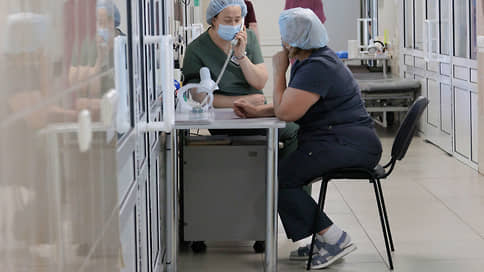Social significance for pulmonary patients
[ad_1]

The diagnosis of chronic obstructive pulmonary disease (COPD) should be included in the list of socially significant diseases approved by the government, and additional sources of funding should be found to provide medical care to such patients, followed from the speeches of experts at a round table meeting held in the Federation Council. The annual budget expenditures for patients with this diagnosis amount to 400 billion rubles, but the bulk of these funds are spent on hospitalization, and not on outpatient treatment or prevention, and there is no preferential provision of drugs for such patients.
According to the Ministry of Health, the number of patients diagnosed with chronic obstructive pulmonary disease registered at the dispensary is constantly growing and from 2020 to 2022 increased from 602.4 thousand to 626.5 thousand people. At the same time, approximately 1.5–2 million patients with COPD are registered in the country, and epidemiological studies suggest that their real number can reach 13–14 million people (specialists attribute this data gap to problems in diagnosing the disease).
As Sergei Avdeev, chief freelance pulmonologist of the Ministry of Health and director of the clinic for pulmonology and respiratory medicine at the First Moscow State Medical University named after I.M. Sechenov, noted at a round table in the Federation Council, COPD ranks first in the structure of mortality due to respiratory diseases.
In Russia, more than 20 people per 100,000 of the population have the official cause of death precisely as chronic obstructive pulmonary disease.
According to the Federal Bureau of Medical and Social Expertise of the Ministry of Labor, in the structure of disability, the number of patients with COPD is 84 thousand people. At the same time, 47% of them are people of working age. Every year, 21.6 thousand people are recognized as disabled because of this disease.
According to the Deputy Director of the Department of Organization of Medical Care and Sanatorium and Resort Affairs of the Ministry of Health Valeria Gulshina, with proper prevention, timely diagnosis, effective therapy and medical rehabilitation, the progression of this disease can be slowed down, reducing mortality and affecting the life expectancy of patients.
But for the adoption of all measures, experts say, appropriate funding is needed. According to a study conducted at the National Research Center for Preventive Medicine, over the period from 2016 to 2022, the economic burden on the state budget in the form of direct medical and non-medical costs associated with COPD increased from 170.3 billion to 400 billion rubles. At the same time, 84% of the costs fall on activities related to the hospitalization of patients. Only 10-11% goes to outpatient care. There is no preferential drug provision for such patients.
“The current trend is to take the patient out of the hospital. Now we practically “chain” these patients – when, due to the lack of medicines in the outpatient segment, we are forced to hospitalize them, – says Yuri Zhulev, co-chairman of the All-Russian Union of Patients. – If there is no medicine, no rehabilitation will help.
As a solution to the issue of financing prevention, rehabilitation and providing patients with COPD with medicines, the participants of the round table proposed to include this diagnosis in the approved by the government scroll socially significant diseases.
“Expanding the list can be the first step towards creating a comprehensive medical and social care for patients and the overall COPD management system in our country,”— noted Deputy Chairman of the Federation Council Committee on Social Policy Oksana Khlyakina. Such a step would make it possible to achieve the inclusion of COPD in state programs to combat non-communicable diseases, improve the quality of medical care and drug provision, and also strengthen the prevention of the disease.
Since, according to the medical community, smoking is one of the provoking factors for the development of the disease, it was proposed at the meeting to consider the idea of allocating subsidies to the regions for preferential drug provision of patients through excise taxes collected on cigarettes and tobacco products. As an example, the introduction of an excise tax on carbonated sugar-containing drinks from July 1, 2023 was cited – we recall that part of the deductions will become a source of additional funding for the state program to reduce mortality from diabetes.
Valery Ryazansky, scientific supervisor and member of the Academic Council of the Moscow State University for the Humanities and Economics, agrees that part of tobacco excise taxes can be used to treat and prevent the diseases caused by smoking. “We are ready to finalize this proposal, to make financial calculations, so that it looks like a prepared draft legislative initiative, which we could submit to the Committee on Social Policy of the Federation Council,” the expert said.
[ad_2]
Source link








